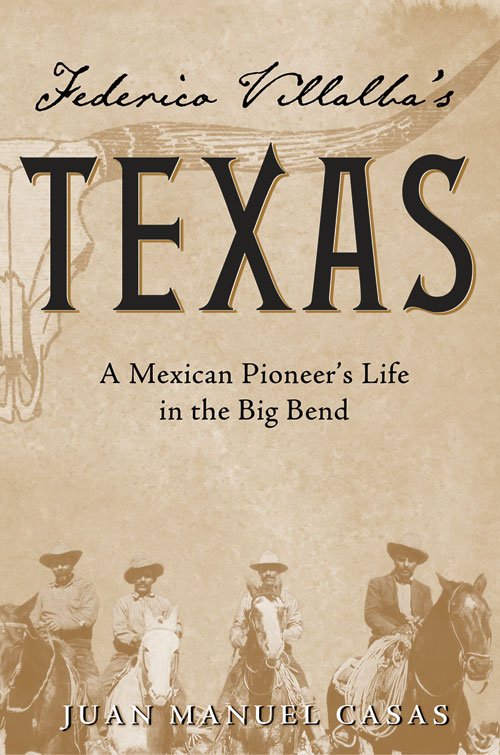
Five years ago I undertook a project that, like a time machine, catapulted me back to the Trojan War, then to our subsequent ancestral home in Italy, and, via Spain and Mexico, to the Big Bend of Texas.
Initially, my intention was to put together a primer for the immediate ancestors of my great-grandfather, don Federico Villalba, who moved from Aldama, Chihuahua, to the border in San Carlos. The "primer" ballooned into a three hundred-plus-page treatise filled with photographs chronicling the Villalba family legacy. The book was received so enthusiastically by our family that I was encouraged to have it published, not only for ancestral knowledge, but as historical record. I am happy and honored to add that my book, Federico Villalba's Texas: A Mexican Pioneer's Life in the Big Bend, is due on the shelves this July.
My mother, Herminia, was born on Rancho Barras on the banks of the Rio Grande, in 1926. She is the daughter of Regina Villalba, Federico's pistol-packing daughter. He also had five sons: Felipe -- the eldest, Jorge, Federico Jr., Jacobo ("Jake"), and Santos.
Barras Ranch was situated in the present-day Big Bend National Park.
The sixteen hundred-odd acres Federico leased from A. J. Compton are designated as the Diablo Ranch on the Park Service map. El Diablo was the family's second landholding. The initial ranch, a ten thousand-acre estate, was situated in Burro Mesa. Federico was obligated to enjoin ownership of that holding to the Alpine law firm of Mead and Metcalf in 1924 in return for legal services when his son Jorge was indicted and tried for homicide in the shooting deaths of the Coffman brothers. Jorge was acquitted of the charges by a Brewster County jury.
Federico, at one time, also owned another ten thousand acres on the west side of the Chisos Mountains. In addition to other ranchland Federico had several sections set back as a hunting preserve on the present-day Terlingua Ranch. In the early 1900s he discovered cinnabar on Cerro Villalba, property that had been named for the family. Federico accepted a partner named William Study and began development of the Study Butte Mine. Cerro Villalba was thereafter called Study Butte. My great-grandfather was also proprietor of the Study Butte Store through the 1920s. Not far away was his Bar La Fiesta, a local "waterin" hole. Across the Rio Grande Federico also owned five-thousand acres in the vicinity of old San Carlos, which today is known as Manuel Benavides; additionally he had a successful talabarteria, or leather goods shop, at Santa Elena on the Chihuahua side across from today's Castol'n (originally also called Santa Elena) in the national park.
For the two years I engaged in research hardly any contemporary documentation of Federico's holdings and accomplishments in the Big Bend came to light. It seemed almost as those had been hidden away. Kenneth B. Ragsdale in his tome Quicksilver: Terlingua and the Chisos Mining Company (Texas A&M University Press, 1976), did, however, single out and devote an entire chapter to the shooting of the Coffman boys and of Jorge Villalba's trial. Ragsdale also mentioned my great-uncle Jake's murder in November, 1931, and the purloining of the family property in the Chisos.
By and large, the record of Villalba experiences in the Big Bend has been condensed to the tragedies that befell them and various other well-placed Hispano-American families. There is so much more to the historical record of occupation in the region that has as yet been told. I am grateful that Mike Hardy at Iron Mountain Press feels the same way. In this offering, and in my upcoming prequel, Of Cowboys and Kings, we invite the enthusiast to sense the Big Bend border country through the aspect of one of our earliest settlers, my visabuelo don Federico Villalba.
The book will be available through Front Street Books (fsbooks.com) in Alpine, TX, Barnes & Noble and Amazon.com and Iron Mountain Press, Houston, TX.
Comments
Add Comment
Comments are not available for this entry.